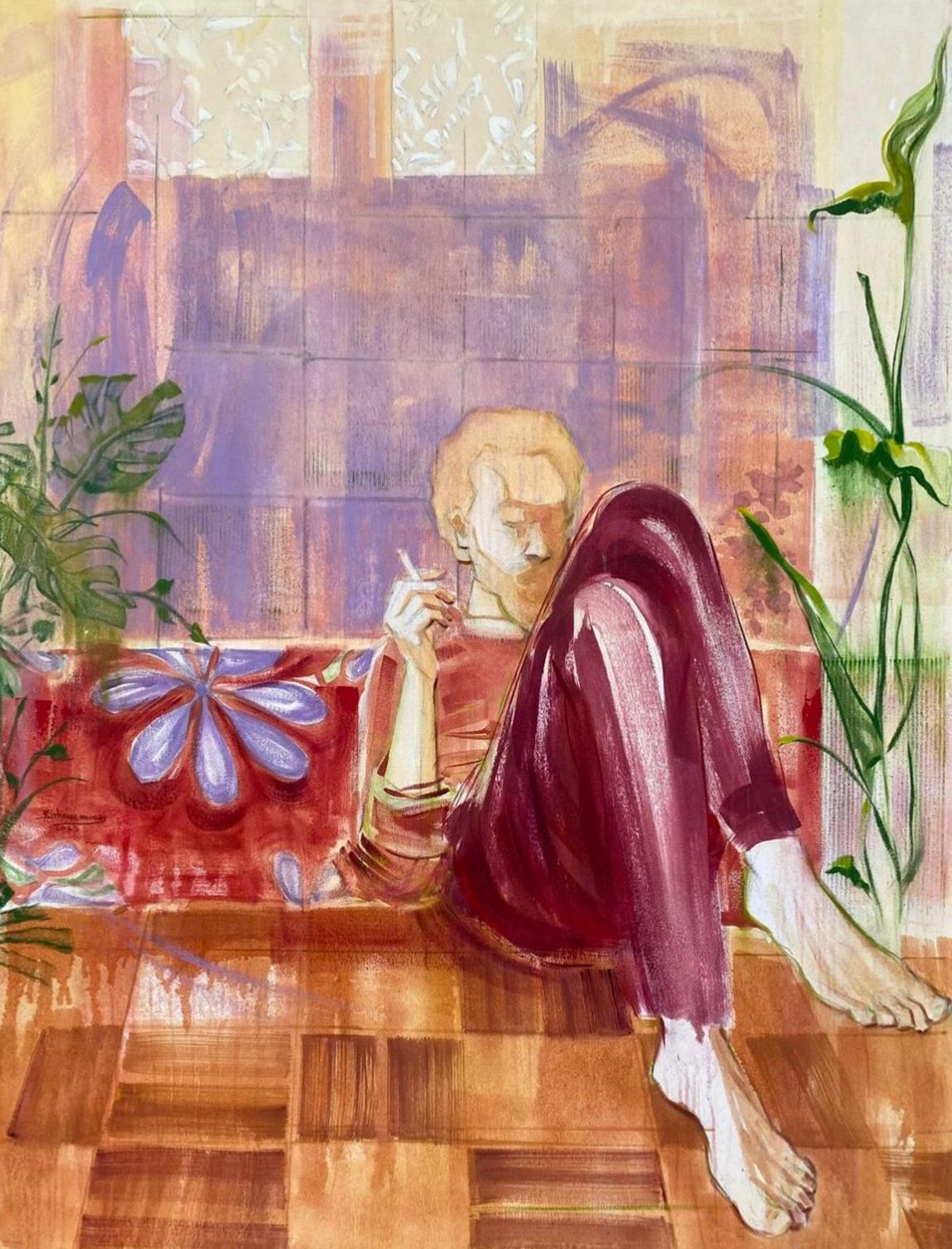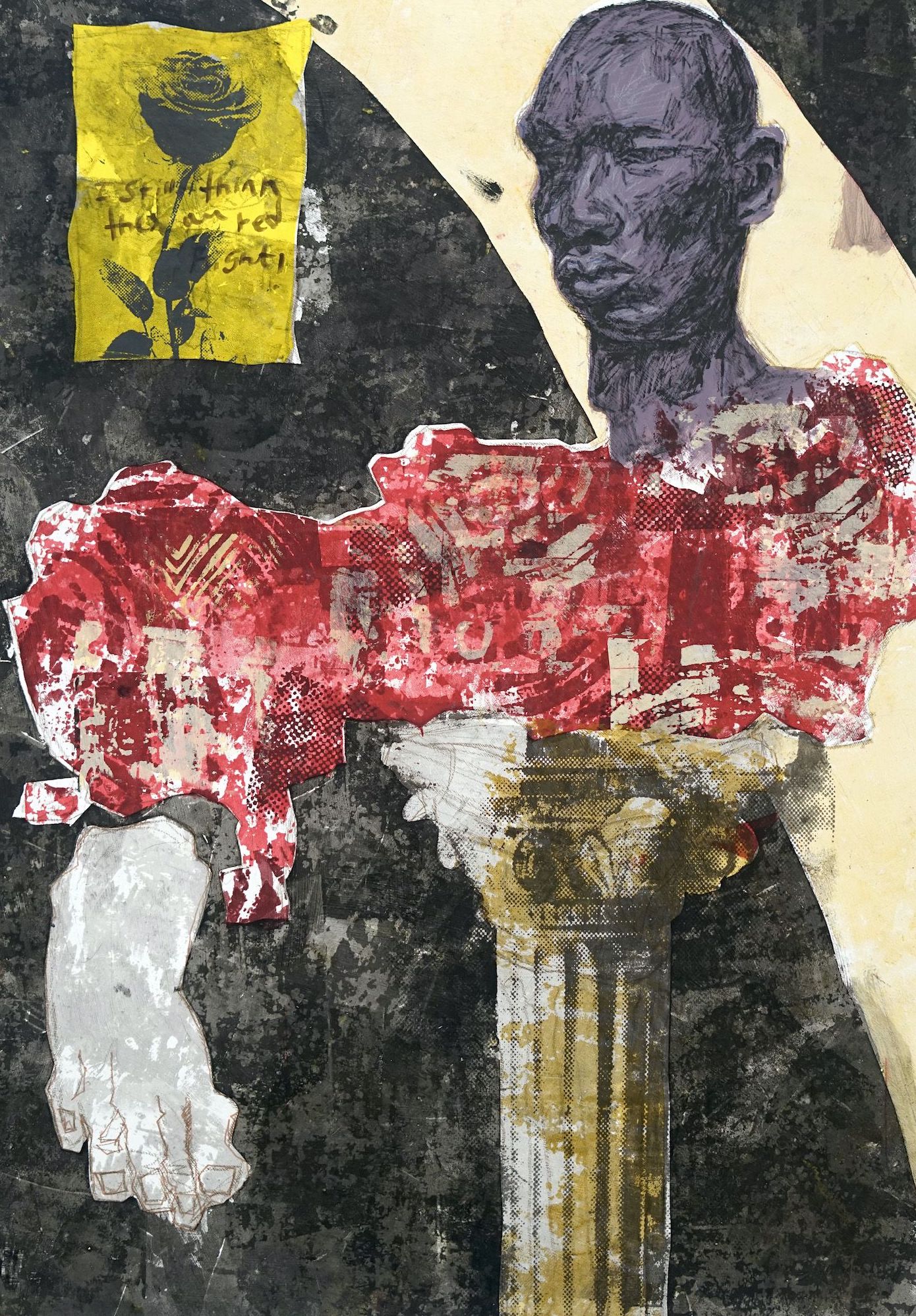Synergy in partnership
Imperatives for new art fair business models in the changing art market
- by Valerie Kabov
 Victor Ubah, Ethereal Time, 2023, acrylic on canvas, presented by Wunika Mukan Gallery, Lagos
Victor Ubah, Ethereal Time, 2023, acrylic on canvas, presented by Wunika Mukan Gallery, Lagos
Contemporary art in the 21st century is very much a globalised industry, turbo-charged by the internet. Certainly, the rise of market engagement by African art has been amplified and accelerated by online engagement and social media. However, like many hyped panaceas, while the internet is a crucial tool for art in the 21st century, time and again IRL proves irreplaceable and calls for innovation on its own terms.
Recently released Art Basel UBS Art Market Report 2024, reflected at length on concerns of art dealers emerging over the rising costs of doing business in the globalised art market, with profit margins in 2023 dropping, even as the number of transactions increases. This has been attributed to inflation and the impact on prices of oil by the wars in the Ukraine and the Middle East. While art fairs may seem conceptually far away from global turbulence, as internationally engaged stakeholders, massively dependent on logistics and travel, the industry as a whole, and art fairs in particular, are very vulnerable to the impact of international conflagrations. In the context of Africa, these vulnerabilities are often amplified relative to our peers in Europe and USA, which, even with inflation, benefit from economies of scale across the whole production chain, from cost of materials to cost of travel and shipping. The cost of compensating for gaps in infrastructure, like locally produced art materials and reliance on air freight in the absence of trains or reliable road transport, are an additional obstacle to market engagement for African galleries looking to engage new markets and audiences.
Much has been said about the expansion of the online art market to democratise access to the art market to participants outside the major art centres. Indeed, online sales have now become a stable component of the art market, catapulted during covid lockdowns. However, post covid lockdown, online sales have receded and USA, China, UK and France remain the major art market centres of the world. This is because buying art is not simply a transaction, it is a unique individual experience mediated by a relationship of trust with a lot of personal and emotional import, that cannot be replicated on the screen. This is why audiences returned to art fairs with gusto once lockdowns were lifted and the places with best infrastructure support and investment in culture continue to have a distinct advantage.

Birhane Worede, Morning Interaction With Space, 2023, oil on canvas, price on request, presented by Chilli Art Projects, ENQUIRE
Given this imbalance, art fairs on the continent have a unique responsibility to think of themselves not just as profit-making entities selling real estate, but also with recognition of their role in the evolving ecosystem. Understanding the obstacles to engagement faced by their clients, galleries can help shape innovative business models and build synergistic partnerships, which expand engagement and build quality, at the same time benefiting new and established collecting audiences.
Latitudes’ International Galleries Platform (IGP) was launched in 2023 with the aim of introducing the Johannesburg audience to a greater variety of art and artists from across Africa and around the world, and to make the decision of coming to a new fair in South Africa an easy one.
According to Nina Carew, the convenor for IGP, the decision for galleries is in fact a ‘no-brainer’.
‘The platform offers galleries the opportunity to send artworks to showcase in Johannesburg, which are installed and sold by the Fair on behalf of the gallery, thus alleviating the gallery of the burden of paying for a standalone booth and any associated travel costs. As such, galleries have very few overheads and participating at a Fair dedicated to art from Africa becomes more accessible than ever.’
 International Galleries Platform booth at RMB Latitudes Art Fair 2023, photo by Anthea Pokroy
International Galleries Platform booth at RMB Latitudes Art Fair 2023, photo by Anthea Pokroy
According to Carew, the wins are equally viable for ‘both emerging galleries that are looking to participate at a fair for the first time, and for established galleries with a very full programmes calendar that would like to get a feel for a new fair without needing to overstretch their team.’
Second year in, IGP 2024 expanded from 7 to 10 participants, and will host galleries from Nigeria, Angola, Uganda and Botswana as well France, Germany, Switzerland, UK, Spain and Portugal (all selling African contemporary art), with demand outstripping supply of available spaces.

Kaleab Abate, Purple Dreams, 2023, mixed media on paper, R29,000.00 excluding VAT, presented by Afriart Gallery, ENQUIRE
Going forward, IGP ‘sits at the heart of RMB Latitudes’ pursuit to engage internationally’…’democratises the art fair structure’ and is envisaged to ‘grow in pan-African and diasporic representation and to become known as a fair that offers accessible and alternate modes of exhibiting’, says Carew.
The increased interest in this kind of participation has also created curatorial opportunities for the Latitudes team to again think proactively and progressively about their audience engagement and education.
Working with the team of emerging and established curators in the fair context, Carew points out that it is, “imperative to work collaboratively with galleries to ensure the selection makes sense to their endeavours, while presenting artists and artworks which hold important conceptual and thematic resonance with RMB Latitudes’ audience. Furthermore, it is important in our selection process that works are carefully considered so that participating artists are not represented tokenistically but rather curated in a nuanced way that speaks to their unique practices.”
By innovating, an initiative like IGP turns challenges of the art market into an opportunity, with generative synergies benefiting galleries, artists and audiences. It is a great example of how African sectors can leapfrog the limitations of legacy infrastructures and operate in a way that is responsive to local needs, not only not compromising on quality but enhancing it.
Valerie Kabov
© 2024
Further Reading In Articles
African Artist Directory















